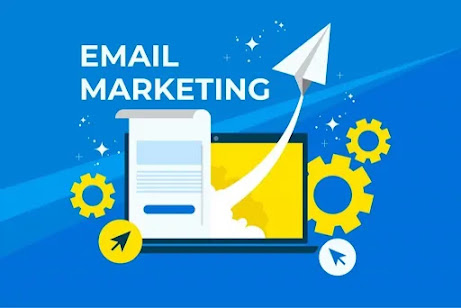Email Marketing using AI is the latest breakthrough in the world of digital marketing. The existence of Artificial Intelligence (AI) takes email marketing to a higher level. In today's data-based world, AI will make it
easier for business people to develop their business. Data is a very important
factor for the development of a business. In this article we will discuss how
to use AI to manage email marketing.
1. Audience Targeting Strategy
Before you start planning campaigns and creating email copy,
you need to have a clear understanding of your target audience(s) and how you
might approach each one with different, unique messaging. Marketers have been
identifying target audience segments and planning messaging strategies around
them for decades, but AI can make the process faster and more efficient than
ever before.
Many customer data platforms (CDPs) and email marketing
platforms include various machine learning algorithms (which the industry now
lumps into the AI arena) that can help marketers identify distinct audience
segments within their overall database. But, generative AI tools like ChatGPT
can also be a big help here. You can provide the AI with information on your
product or service, as well as your existing database demographics, and ask it
to help identify specific segments that could warrant distinctive messaging.
The more information you feed into the AI, the better
results you’ll receive, so give it as much background information as possible
in your query. Then, refine the results until you have an audience segmentation
and targeting strategy that meets your needs and reflects your business.
2. Subject Line Iteration
This one is a little more straightforward as an easy use of
generative AI, but it’s still a great way to leverage a tool like ChatGPT or
Bard to help come up with a variety of email subject lines to test. Subject
line brainstorming can be a tedious process for email marketers, especially if
you’re looking to test different variations or create distinct subject lines
for different audience segments. AI can help kick-start the process.
I wouldn’t simply just recommend querying an AI to give you
a subject line for an email campaign segment and run with it. Instead, try
using the tool to give you a list of five or 10 viable subject lines for each
case. Then, use its suggestions to kick-start your own brainstorming. You can
also keep the AI involved in helping refine the list more and more by narrowing
your query parameters. It’s a great example of how to combine AI and HI (human
intelligence).
3. Email Copy Creation
Just like subject line iteration, generative AI tools can be
a huge help in crafting actual email content. If brainstorming subject lines is
time-consuming, then writing actual email content takes that to another level.
Even copywriters who can crank out content quickly need time for inspiration
and revisions, which burns your most precious resource as a marketing
professional: time.
A tool like Bard can write the contents of a marketing email
in seconds. However, email copy is another arena in which the combination of AI
and HI comes into play and will typically deliver the best results. Carefully
hone your prompts to provide the AI with information on not only your product,
service or offer but also the audience segment you’re targeting. The more
information you provide, the better the resulting copy will be. Once the email
copy starts to resemble what you’re looking for, you can make additional edits
yourself to ensure it hits the mark.
4. Custom Image Design
Generative AI isn’t just for creating copy. You may have
heard about tools like DALL-E or Midjourney (there are others as well) that can
create unique images based on user prompts. Depending on your email strategy,
you may want to explore these types of AI image generators as a way to create
unique and targeted images.
AI image tools may take even more time to get comfortable
with than generative AI platforms like ChatGPT, but once you get the hang of
them, there’s almost no limit to what you can create. I recommend diving into
one of these image AI tools and experimenting with the interface and prompt
process. Then, when you’re ready to create a campaign for which a unique
AI-generated image makes sense, you’re already up to speed.
5. Performance Analysis And Optimization
No email marketing campaign is really complete without the
all-important performance analysis step. Certainly, you’ll have your key
performance indicators (KPIs) in mind when you monitor the results, but AI can
give an assist here as well.
Beyond built-in machine learning tools that may be resident
in your email marketing platform, you can enter your performance data into a
tool like ChatGPT and ask it to provide an analysis of what worked, what didn’t
and how you might optimize your next campaign based on these learnings.
This is really just a good starting point for using AI in email marketing. Once you get familiar with the tools and how they can impact your strategy and campaigns, start experimenting with ways to further leverage AI to enhance and optimize your entire email marketing program.
